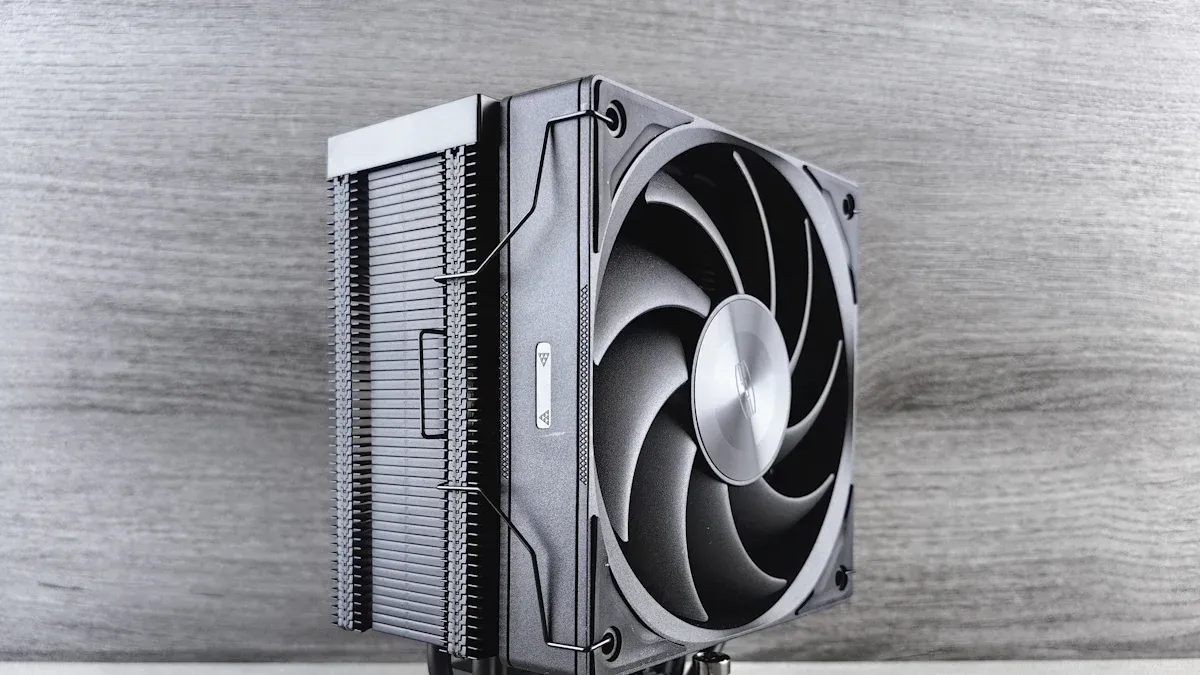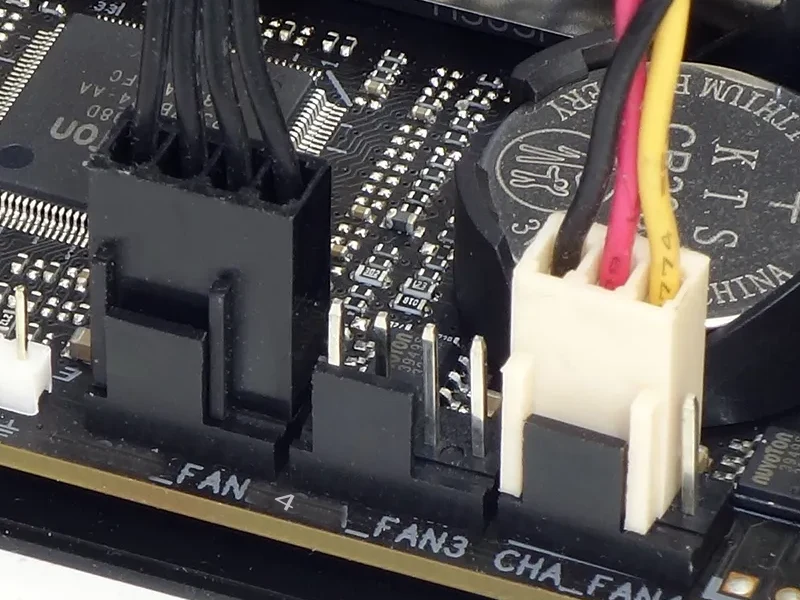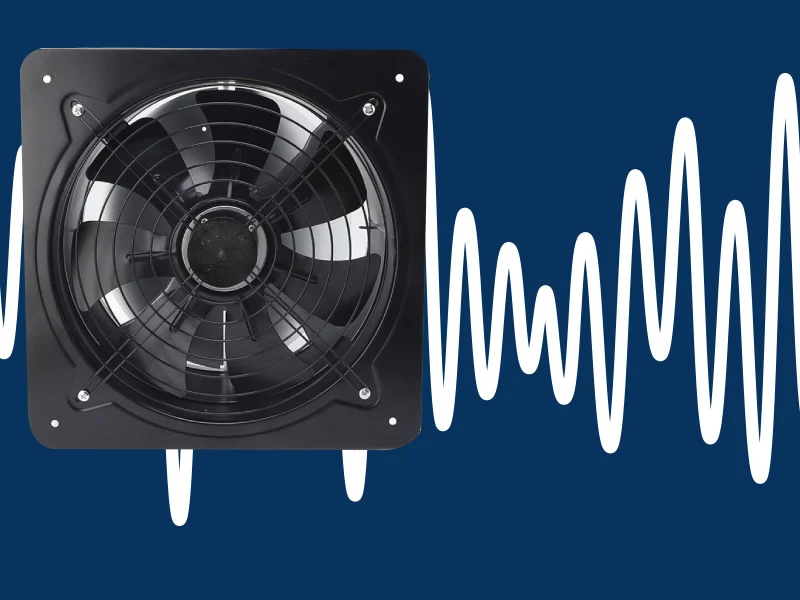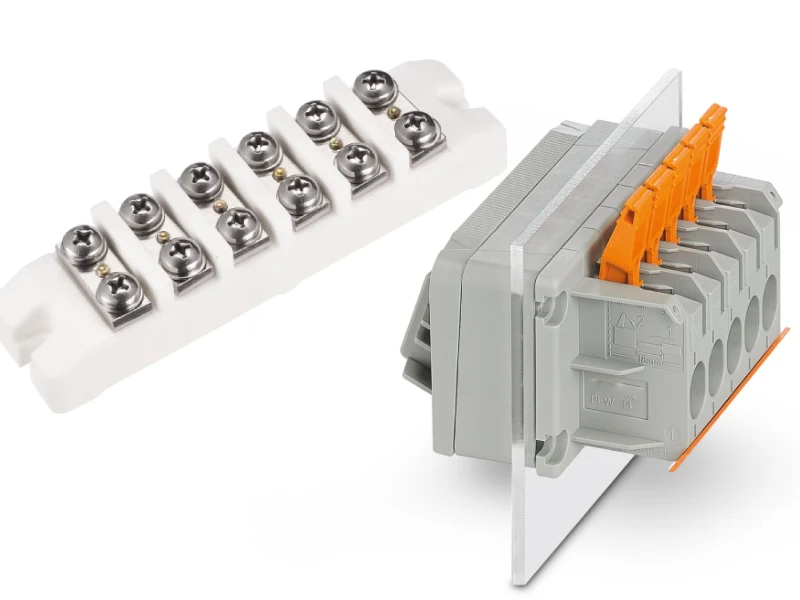You want the best performance from your control cabinets, right? Heat dissipation from control cabinets via built-in fan depends on choosing the right fan, placing it in the optimal spot, and keeping up with maintenance. High-quality options like Linkwell’s Electrical Enclosure Fans and Fan Filter Units make a real difference. Check out the numbers below—using these fans can boost fan life by 66.67%, cut downtime to almost zero, and keep filters twice as clean.
| Metric | Before (Years) | After (Years) | Improvement |
|---|---|---|---|
| Fan Life | 3 | 5 | 66.67% |
| Downtime | High | Near-zero | Significant |
| Filter Cleanliness | Standard | 2× Cleaner | 100% |
If you take a systematic approach and use advanced ventilation products, you protect your equipment and keep things running smoothly.
Key Takeaways
- Choose high-quality fans like Linkwell’s to improve cooling efficiency and extend fan life by up to 66.67%.
- Regular maintenance, including cleaning filters and checking for wear, can prevent overheating and extend the lifespan of your equipment.
- Proper fan placement is crucial; aim airflow at hot spots to enhance cooling and reduce the risk of component failure.
- Use online tools to calculate airflow needs and select the right fan size for your control cabinets.
- Monitor temperatures regularly to catch issues early and maintain optimal performance in your control cabinets.
Why Heat Dissipation Matters in Control Panels
Risks of Poor Heat Dissipation
You might not notice it right away, but poor heat dissipation in control panels can cause a lot of trouble. When heat builds up inside your cabinet, things start to go wrong fast. Here’s what you could face:
- Performance issues pop up as high temperatures slow down your electronics. Your system might lag or even freeze.
- Reliability drops. For every 10°C rise, the failure rate of your components can double. That means more breakdowns and more headaches.
- Lifespan gets shorter. Hot environments wear out parts quickly, so you end up replacing things more often.
- Energy bills climb. Overheated devices use more power, which strains your cooling systems and drains batteries faster.
- Safety risks increase. Too much heat can lead to dangerous situations like thermal runaway or even fires.
- Overheating can damage electronic components and control boards. You might see parts warp, melt, or just stop working.
- Problems often come from running equipment too long, not having enough ventilation, or dealing with tough environmental conditions.
Tip: If you ignore heat dissipation, you risk unplanned downtime and expensive repairs. It’s not just about comfort—it’s about keeping your equipment safe and reliable.
Benefits of Effective Cooling for Equipment Longevity
Now, let’s talk about the upside. When you focus on proper heat dissipation and control panel cooling, you protect your investment and keep your operations smooth. Effective cooling keeps your electrical components within their ideal temperature range. This means your equipment runs better and lasts longer.
Manufacturers have found that 65% of common IT equipment faults link directly to poor cooling. When you manage heat well, you cut down on failures and avoid sudden shutdowns. In industrial settings, even a small rise in temperature can trip protective circuits or cause relays to fail. Over 25% of panel failures happen because of thermal stress.
You want your control panels to work hard for years. Good control panel cooling makes that possible. It prevents overheating, reduces the chance of malfunctions, and saves you money on repairs and replacements. When you keep things cool, you keep your business running strong.
Calculating Heat Load & Airflow for Forced Air Cooling

Getting forced air cooling right in your cabinets starts with understanding how much heat you need to remove. If you skip this step, you might pick a fan that’s too weak or too strong. Let’s break it down so you can make the best choice for your setup.
Assessing Internal Heat Sources
First, you need to figure out what’s heating up your cabinets. The internal heat load comes from all the electrical parts inside. Here’s what you should look at:
- The number and type of devices, like VFDs, transformers, and relays.
- How much power each device uses and how efficient they are.
- The total heat lost by these devices, which adds up to your internal heat load.
- The maximum temperature your components can handle.
Don’t forget, the more packed your cabinets are, the more heat you’ll have to deal with. Always check the specs from the manufacturer for safe operating temperatures.
Using the CFM Formula for Control Cabinets
Once you know your internal heat load, you can size your fan for forced air cooling. The most common formula is:
- CFM = (Room Volume × Air Changes per Hour) / 60
You can also use CFM = (fpm × area) if you know the airflow speed. Getting the right CFM means your forced air cooling system will keep things at a safe temperature.
| Feature | Compliance Standard |
|---|---|
| Certified components | UL, cUL |
| International safety standards | UL, CE, ISO |
| Enclosure protection ratings | UL, cUL |
Choosing certified fans, like Linkwell’s Electrical Enclosure Fans, gives you peace of mind. These fans meet strict safety and performance standards.
Online Tools and Sizing Tips
You don’t have to do all the math by hand. Try online tools like Therm 4.1 or the Enclosure Cooling Selection Tool. These help you calculate airflow and pick the right fan for forced air cooling. Linkwell also offers a detailed checklist and 24/7 support to help you select the perfect fan for your cabinets. You can even customize fans for special needs, like variable speeds or advanced controls.
Tip: Always consider the size, color, and material of your cabinets. These factors affect how much heat stays inside and how well forced air cooling works.
Optimizing Heat Dissipation from Control Cabinets via Built-In Fan

When you want to get the most out of your control cabinets, you need to focus on heat dissipation from control cabinets via built-in fan. This is where Linkwell’s advanced product range comes into play. You can choose from Electrical Enclosure Fans, Fan Filter Units, Cabinet Fans, and Electrical Enclosure Ventilation systems. Each product is designed to boost cooling, improve forced air movement, and keep your equipment safe.
Selecting Linkwell Electrical Enclosure Fans and Fan Filter Units
Picking the right fan or fan filter unit is the first step to maximizing cooling. You want a solution that matches your cabinet’s needs and fits your cooling capacity requirements. Here’s what you should look for:
- Size: Make sure the fan fits inside your cabinet and leaves room for future upgrades.
- Power Requirements: Check that the voltage and current match your system to avoid inefficiency.
- NEMA Ratings: Pick a fan that meets or beats your enclosure’s NEMA rating for environmental protection.
- Noise Levels: Choose fans with low decibel ratings for a quieter workspace.
- Installation & Maintenance: Go for fans that are easy to install and maintain.
You also need to check technical specs like voltage compatibility, airflow capacity, and industry certifications. Linkwell’s fans and filter units come with UL, TUV, CE, and CB certifications, so you know you’re getting reliable performance. You can even customize colors, add a power indicator light, or select a more stable filter with EMC features. Here’s a quick look at what sets Linkwell apart:
| Feature | Advantage |
|---|---|
| Power indicator light | Yes |
| Customizable colors | Yes |
| Convenient replacement method | Yes |
| EMC unit for stable filter | Yes |
| Warranty | 1 Year |
| Certifications | UL, TUV, CE, CB |
| Customization | Available |
Linkwell’s fans work with many types of control panels and industrial applications. You can find options for different air throughput, voltage, frequency, and fan dimensions. Whether you need axial, centrifugal, or diagonal fans, Linkwell has you covered. EC fans offer variable speed and energy efficiency, making them a great fit for modern control systems.
Placement and Installation Best Practices
You can’t just throw a fan into your cabinet and hope for the best. The placement of your built-in fan makes a huge difference in cooling and forced air performance. Forced convection, created by fans, pushes warm air out and pulls cooler air in. This keeps your electronics at the right temperature and prevents overheating.
To get the best heat dissipation from control cabinets via built-in fan, follow these best practices:
- Install Physical Barriers: Use plastic curtains or heavy drapery to separate hot and cold aisles. This helps direct airflow and improves cooling.
- Separate Hot and Cold Air With Chimney Containment: Add chimney structures to guide rising warm air out of the cabinet and into HVAC ducts.
- Optimize Aisle Containment: Enclose hot and cold aisles with end-of-row doors or panels to manage airflow.
- Attach Blanking Panels: Fill gaps in racks with blanking panels to stop air from mixing and keep temperatures stable.
- Monitor Temperatures: Use real-time temperature monitors or simple thermometers to spot temperature spikes before they cause trouble.
You should also place fans to target hot spots directly. By aiming airflow at the areas that get hottest, you improve cooling and reduce the risk of component failure. Fans on the exhaust side push warm air out, creating a suction effect that draws in cooler air from outside. This setup boosts the efficiency of forced air and keeps your cabinet running smoothly.
If your environment gets hotter than your design allows, you might need extra cooling systems like thermal electric or vapor compression units. These can help maintain lower temperatures and enhance heat dissipation from control cabinets via built-in fan.
Integrating Thermostats and Ventilation Accessories
You can take your cooling to the next level by adding thermostats, hygrostats, and other ventilation accessories. These tools make your system smarter and more efficient. Thermostats and hygrostats only turn on the fan when heat or humidity goes above safe levels. This selective operation saves energy and extends the life of your equipment.
- Thermostats control fans based on temperature, so they only run when needed. This gives you automated climate control.
- Ventilation accessories, like louvers and ducts, help manage airflow and keep temperatures steady.
- Built-in fans usually go on the exhaust side, pushing warm air out and pulling cool air in. This setup improves cooling and forced air movement.
When you combine these accessories with Linkwell’s products, you get a complete solution for heat dissipation from control cabinets via built-in fan. You can handle cooling capacity requirements, manage forced air, and keep your equipment safe in any industrial setting.
Linkwell’s product range fits a wide variety of control panels and industrial applications. You can match air throughput, voltage, and fan type to your specific needs. Whether you’re working with wind power, energy storage, or automated robotics, Linkwell’s solutions make it easy to optimize cooling and forced air in your cabinets.
Tip: Always review your cabinet’s layout and airflow before installing new fans or accessories. A little planning goes a long way in maximizing heat dissipation from control cabinets via built-in fan.
Environmental and Maintenance Considerations
Managing Ambient Temperature and Dust
You might not realize it, but your cabinet’s environment plays a huge role in how well your cooling system works. High ambient temperatures can push your fans to their limits. Dust and airborne particles can clog filters and moving parts, leading to overheating and even equipment failure. Here are some key factors that impact your cabinet’s performance:
- High ambient temperatures strain cooling systems and make it tough to keep things cool.
- Dust and dirt can block moving parts and prevent contacts from working, which leads to overheating.
- Airborne contaminants can clog filters, causing fans to work harder and sometimes fail.
To fight dust and keep your cabinet clean, you can use advanced strategies. Check out this table for some effective options:
| Strategy | Description |
|---|---|
| HEPA and ULPA Filtration | Capture up to 99.9995% of particles, keeping air inside your cabinet clean and safe. |
| Laminar Flow Engineering | Uses smooth, one-way airflow to stop dust from settling on sensitive parts. |
| Dust Control Fans | Create air barriers that push dust to the floor, preventing buildup on your equipment. |
Tip: If your cabinet sits in a dusty or hot area, consider upgrading to fan filter units with high-efficiency filters.
Regular Maintenance for Long-Term Performance
You want your cooling system to last, right? Regular maintenance is the key. Clean or replace filters often, especially if your cabinet is in a dirty environment. Dust and debris can build up fast and block airflow. Inspect fans for any signs of wear or noise. Lubricate moving parts if needed. Tighten loose screws and check for any signs of corrosion. A quick monthly check can save you from bigger problems down the road.
- Replace filters every 4–6 months in clean areas.
- In dusty places, check and change filters every 1–3 months.
- Wipe down fan blades and vents to keep airflow strong.
Note: A clean fan runs quieter and lasts longer.
Monitoring and Troubleshooting
You can’t fix what you don’t see. Real-time monitoring helps you spot trouble before it gets serious. Many modern cabinets use sensors to track temperature, humidity, and airflow. Devices like the Raritan SmartSensor or Vertiv Geist Sensor keep an eye on your system and alert you to problems.
If your fan isn’t keeping things cool, try these steps:
- Make sure the fan is running and check for power issues.
- Look at the room temperature and see if your equipment is making extra heat.
- Check that nothing is blocking the airflow and that the cabinet is sealed right.
- Inspect the fan’s speed and make sure nothing is stuck in the blades.
Callout: Early detection and quick fixes help you avoid downtime and keep your equipment safe.
You can keep your control cabinets cool and reliable by following a few best practices. Start with the right cooling method for your needs:
| Cooling Method | Description |
|---|---|
| Forced Air Cooling | Uses fans for tight spaces and high heat loads |
| Natural Convection | Relies on airflow, best for open or less crowded setups |
| Liquid Cooling | Handles extreme heat, but is more complex |
Choose certified products like Linkwell’s for stable airflow and easy integration. Don’t forget regular maintenance and smart planning. If you want expert advice or custom solutions, Linkwell offers digital monitoring, real-time data, and strong after-sales support. Reach out for help that fits your project.
FAQ
How often should you check the temperature inside control cabinet enclosures?
You should check the temperature inside your control cabinet enclosures at least once a week. Regular checks help you spot temperature rise early. This keeps your equipment safe and helps you avoid sudden heat problems.
What causes temperature rise in control cabinet enclosures?
Temperature rise happens when the heat generated by the components cannot escape. Poor airflow, blocked vents, or high ambient air temperature can make the temperature go up fast. You need good enclosure temperature management to keep things cool.
How do you know if your cooling solution meets your cooling requirements?
You know your cooling solution works if the temperature inside your control cabinet enclosures stays steady. Watch for sudden temperature rise. If you see heat building up, your cooling requirements may not be met. Upgrade your cooling solution if needed.
Why is active heat dissipation important for enclosure temperature management?
Active heat dissipation uses fans or other devices to move heat out of your control cabinet enclosures. This keeps the temperature from rising too high. Good enclosure temperature management protects your equipment and helps it last longer.
Can you prevent temperature rise in control cabinet enclosures without fans?
You can slow temperature rise with vents or passive airflow, but fans work better. Fans give you active heat dissipation. They move heat out quickly and keep the temperature low. For most control cabinet enclosures, fans are the best choice.




